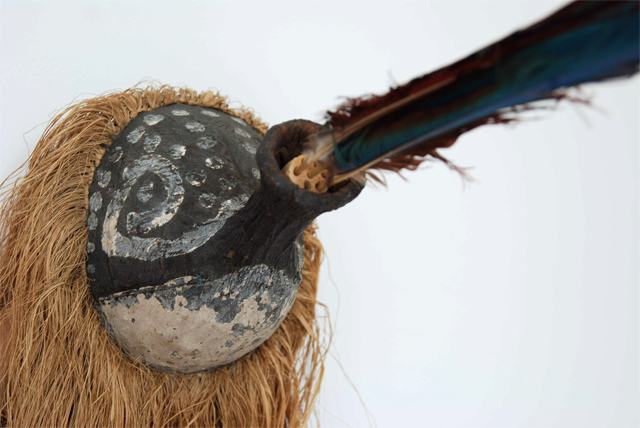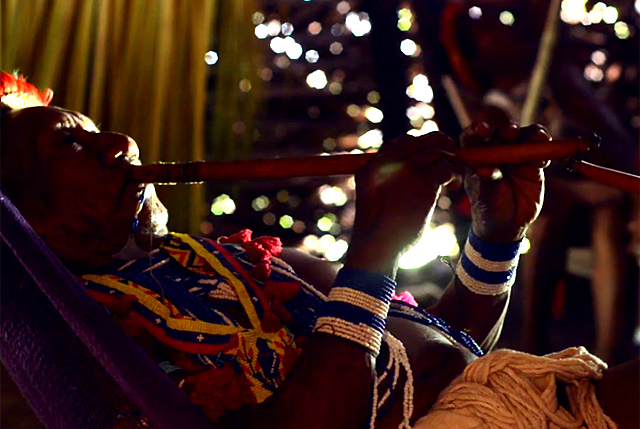The Museum of Sciences in Caracas announced the acquisition of a new warime mask of the Piaroa people, according to a press release dated August 10. Issued by the Ministerio del Poder Popular para la Cultura of Venezuela, the news story indicated that the Imé warime mask will be located in the central isle on the ground floor of the museum.

The mask depicts a white-lipped peccary (Tayassu pecari), a wild animal of the tropical forest but also a character in Piaroa warime celebrations in which they sing to the rivers Cuao, Cataniapo, and Autana. In the words of the Google translation of the press statement, the importance of the mask is that the warime “is part of the many cultural and spiritual expressions of this indigenous ethnic group.”
In fact, the press release continues, the warime “is the most important celebration of the physical and magico-religious world of the Piaroa.” The ritual, which is held annually, celebrates fertility and abundance. Masked dances during the ritual reproduce mythical events in which animals and people change shapes. The mask added to the museum collection was made by an unknown Piaroa man, according to the experts, and donated to the museum by Mariela Arvelo. It was made with traditional vegetable materials that were bonded with a resin and adorned with macaw feathers sticking out of the muzzle (see the photo of it).

The press release credits Alexander Mansutti with writing that the warime masks are ritual objects fabricated by Piaroa shamans who are responsible for the celebrations. They obtain the materials, prepare the rituals, and develop the ceremonies. Mansutti’s 2008 article “Envy and Revenge: The Case of the Piaroa” provided a lot of additional details about the place of the warime rituals in Piaroa society.
He described the warime festival as a celebration of fertility, abundance and wealth. The festivals, and the masks that are needed to stage them, are closely tied in with their peacefulness. The shamans who organize a warime festival, according to Mansutti, are aware that it might foster envy and hostility from some neighboring shamans who may not have as many resources so they could become jealous. To counterbalance that possibility, the organizing shamans will try to build alliances with other shamans to prevent any shamanic attacks from happening. But controlling envy is key.
Mansutti argued that the Piaroa are rarely aggressive physically—they have a highly peaceful society and they idealize the absence of violence in their communities. To reinforce their idealistic views of themselves, their myths include a worldview that focuses on the effects of shamanic violence. Their peacefulness is marred, at least symbolically, by shamanic aggression; their mythology allows the shamans to bring to life and then to cope with envy and the violence it can produce. In sum, the Piaroa are “masters of the uses of symbolic violence,” he wrote (p.216). The warime festivals exist to forestall envy and violence as well as to celebrate abundance.

A more recent article by Mansutti (2012), “Yuruparí: Máscaras y Poder entre los Piaroas del Orinoco” (available as a PDF), described the key roles played by peccary masks in the warime festivals. The story of the festival day for the masks begins at dawn when they are awakened by toucans, represented by special types of flutes made without holes and played by Piaroa performers. While many other creatures participate during the events of the day—monkeys, vampire bats, spiders, caimans, and other animals—the essential element in the celebration is the mask of the peccary. It appears as if the Museum of Sciences has gained a real treasure for its collections.